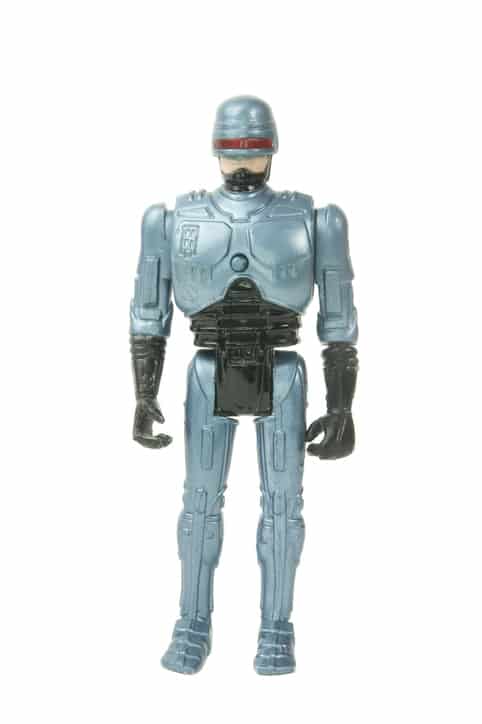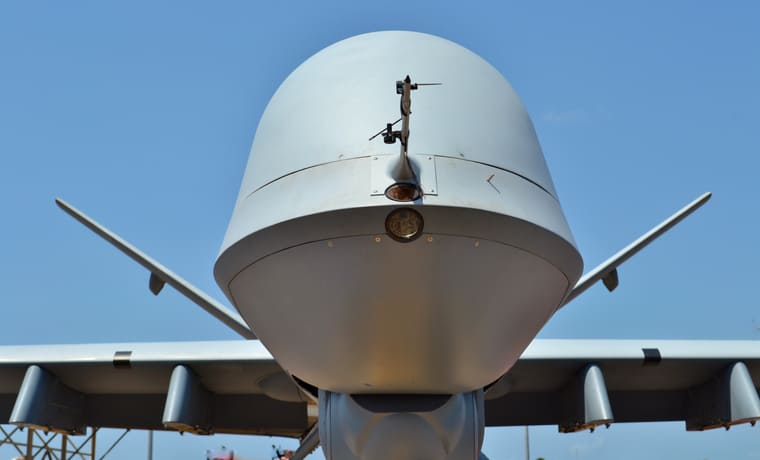“Come quietly, or there will be trouble.”
– RoboCop
RoboCop is perhaps one of the baddest, funniest, and most iconic killer robots in film history. For anyone that hasn’t had the guilty pleasure of watching Paul Verhoeven’s dystopian classic RoboCop, here’s a brief rundown…
Officer Alex Murphy is a cop in a futuristic version of Detroit, where the lawless streets are plagued with drugs, violence, and corruption (It hardly took a psychic to predict that one).
One day while attempting to make an arrest, Murphy is tragically shot and killed in the line of duty. A shady government-funded technology company agrees to bring him back to life as the ultimate crime fighter. The catch is that he’ll become a half-human, half-robot who is programmed to “serve the public trust, protect the innocent, uphold the law.”
Fair enough – but considering that now he’s a robotic killing machine, there is some gray area to what “upholding the law” means.

But with the ordinance passed last month in San Francisco, RoboCop isn’t as far-fetched as it was in the late eighties.
“Dead or Alive, You’re Coming With Me”
A proposal passed in San Fran that would have allowed the police department to use robots for killing “when risk of loss of life to members of the public or officers is imminent and outweighs any other force option available to SFPD.”
It initially passed with an 8-to-3 vote.
The new “Law Enforcement Equipment Policy” was filed by the SFPD and contained some very interesting provisions. For one, it required disclosure of all of the military equipment that the department has on hand, some of which are alarming.
They include a Lenco BearCat armored vehicle, a 40-millimeter launcher that can deploy chemical agents, 15 submachine guns, and over a dozen sniper rifles. A pretty big cache of deadly weapons, to be sure.
After public outcry, The San Francisco Board of Supervisors officially reversed the SFPD's decision to use the lethal force option with remote-controlled robots.
But the entire ordeal brought up a crucial topic: when and where should robots be used for deadly force?
Rise of the Drones
The militarization of police forces has been underway for a long time, and none of this is surprising. But, until an unhinged fellow killed six police officers in Dallas in 2016, a robot had never been used to “neutralize” a criminal. (In that case, a bomb-defusing robot was armed with a bomb and blew the guy up in a parking garage).
However, robots have certainly been used in combat for quite some time. But think about this: in 2000, the U.S. Air Force and CIA did not have a single armed drone.
But ever since, the army of robotic drones has continued to grow: data from the International Institute for Strategic Studies shows that the U.S. has at least 678 drones, of 18 different types, in warfare. They have been responsible for over 14,000 attacks.
The most popular drone now is the “Predator 2” – also known as the “Reaper” – which both sound right out of the 80s action movie playbook. The Reaper can carry eight Hellfire missiles and 500-pound laser-guided bombs. They make Robocop look like Barney Fife.

According to a new report, “2022/2023 World Civil Unmanned Aerial Systems Market Profile & Forecast”, the market for civil UAS looks to be “one of the most dynamic aerospace growth sectors for the next decade.”
The $7.2 billion market in 2022 is expected to triple to $19.8 billion by 2031. That represents a 10.1% compound annual growth rate (CAGR).
The U.S. Navy has just handed out contracts to two publicly traded companies working towards developing versions of the Reaper for traditional wars, essentially upgrading them from “assassins to warriors,” taking over reconnaissance, electronic warfare, and strike missions.
Two Stocks Ready to Strike
L3Harris Technologies (NYSE: LHX) is an aerospace defense company that may gain from such an arrangement. Their Integrated Mission Systems segment provides multi-mission intelligence, surveillance, and reconnaissance. Their Space and Airborne Systems segment offers cyber defense solutions, mission avionics, and electronic warfare systems.
Based on analyst expectations from Bloomberg, it currently trades around $216 (with a 2% dividend) and has a price target of $267.00.
Northrop Grumman (NYSE: NOC) is another beneficiary of government contracts, as they currently pulled $18 billion from government coffers last year alone.
They have been a long-time staple in the defense industry and employ 90,000 people with an annual revenue of over $30 billion. It is, without a doubt, one of the world's largest weapons manufacturers. Northrop Grumman is No. 101 on the 2022 Fortune 500 list of America's largest corporations.
Just look at how the last ten years have treated NOC investors, with and without dividends invested:
They have a robust UAV division, with one of the newest editions being an unmanned helicopter.
The company’s Autonomous MQ-8C Fire Scout seeks to provide intelligence, surveillance, reconnaissance, and targeting (ISR&T) capabilities for the U.S. Navy.
You can check it out in action right here.
(Editor’s Note: My colleague Brit Ryle did excellent pieces on drone investing that you can read here and here).
Both companies should provide solid returns over the next decade.
However, not everyone likes to be investing in machines of war. Robots have many more life-changing qualities than life-destroying ones: surgery, self-driving cars, and warehousing come to mind. Ones that “protect and serve.”
Worldwide spending on these types of robotics is expected to double from 2020 to 2025 and reach nearly $210 billion. I’ll be tackling some of the best stocks in that area next time.
Until then, watch out for those killer robots!

Jimmy Mengel
The Profit Sector













